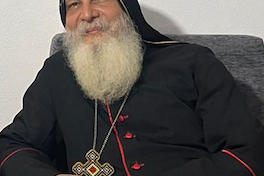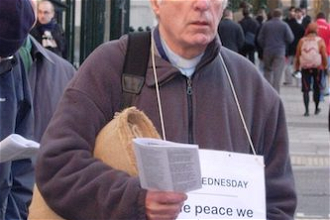Film: Oranges and Sunshine

Oranges and continual sunshine were part of the enticing of young children to go to Australia from the United Kingdom from the 1940s to 1970. These children were orphans, children of unmarried mothers who had to give up their babies to save family shame, children of poor families who could not manage. There were thousands of them. The language used in this film is 'deportation to Australia'. Once in Australia, they were taken to institutions, governmental and religious, treated harshly, in many cases abused, and grew up with little education and not knowing anything about their families.
The issues came up, especially in the 1980s, when so many of the children were young adults and feeling a deep need to know something about their parents and to contact them or relatives.
Margaret Humphreys, a social worker in Nottingham, was approached by a young woman to make a search. Margaret was given time for two years to follow through with investigations which took her often to Australia, at some sacrifice for her devoted husband and children, and at some cost to her own health. However, she persevered, set up a trust, approached governments, received more requests from the children than she anticipated. Governments were reluctant to investigate and charitable organisations and religious groups and orders found that scandalous behaviour on the part of their members was being revealed.
The British and Australian governments issued official apologies in November 2009, almost a quarter of a century after Margaret Humphreys began her investigations. She herself received a CBE in 2011.
The film, Oranges and Sunshine, is based on her book and official documents on cases.
As a film, Oranges and Sunshine is both moving and disturbing. Emily Watson embodies Margaret Humphreys, a local social worker who is asked to do more in life than she ever anticipated. Once involved, she cannot let go and experiences the pain of the children, their emotional neediness as well as verbal and physical abuse from those who resent the criticism as well as impediments from governments. Emily Watson plays her with a combination of British stiff upper lip and quavering heart rather than an out-there crusader. Richard Dillane gives solid support as her husband.
Several of the adults dramatise their memories of the past. Hugo Weaving, in a quietly moving and convincing performance, is a man who has longed to meet his mother, has failed in his marriage and as a father, discovers his sister in England and the truth about his mother. David Wenham, on the other hand, plays a cheeky lout of a man whose brash exterior covers his longing for his mother and who, after initial antagonism towards Margaret, becomes her ally.
The film was directed by the English director, Jim Loach, who has been quite prolific in directing episodes of many British television soaps and serials. His father is Ken Loach, whose films for over forty years have been part of the social conscience.
For audiences unaware of this history, the material might be shocking - another stolen generation. It was the subject in the 1992 ABC mini-series, The Leaving of Liverpool, and of a book by Sydney Catholic journalist, Alan Gill, Orphans of the Empire (1997).
The Christian Brothers' institution in Western Australia, Bindoon, formed the basis of a central story of The Leaving of Liverpool. It becomes a symbolic story in the second half of Oranges and Sunshine. The other institutions in Oranges and Sunshine, Fairbridge, is seen in a reunion of past children where they approach Margaret Humphreys to find their parents.
From a Catholic point of view, especially in the revelations of clerical and religious sexual abuse in the last 20 years, the stories of Bindoon are dismaying. The immediate shock impact when these stories were revealed has gone, but the examination of conscience, the focus on the suffering of the abused have still to deepen. The many films that have opened up these events in dramatic story form can contribute to that awareness and the examination of conscience.
At one stage, Margaret Humphreys appears before a British government panel. They immediately refer to the historical context of the children being sent to Australia - and that is true. But, it has become something of a reflex response that runs the danger of sidestepping the very human suffering of the abused. It is the danger for a religious or a Catholic response.
When the David Wenham character, who lived at Bindoon, takes Margaret Humphreys there, there is an unsettling scene where they go for a cup of tea into the Brothers' refectory and receive silent stares or
bewilderment. A young brother awkwardly serves them the tea in old and cracked cups, no saucers, then in a teapot where he has forgotten to put the tea. Whether this happened or not is not the point. The point is that it has been very hard to comprehend what went on, to reply adequately at times to accusations and confrontations.
Much is said of Brother Keaney's regime at Bindoon and how harsh the treatment was of the boys, working shoeless on the property in the sun, year after year with no education opportunities, receiving painful physical punishment and, from Brothers on the staff, sexual molestation and abuse. In acknowledging this, the Brothers paid large sums of compensation in 1993 to over two hundred of the boys from Bindoon. A reflection on the novitiates and formation up to the 1960s. Young men and women who joined religious orders were also treated harshly in many instances. There was a philosophy (spirituality?) of curbing one's own will in order to do God's will. This meant a great number of petty humiliations by the Novice directors. It often meant doing a great deal of hard manual labour. It meant an ascetical life of early rising, sometimes disregard of seasons and temperatures, the cultivation of extra practices of physical mortification to subdue the senses and passions, a wariness of expressions of affection, at times an obedience that was blind.
On reflection, it can now be seen that many religious priests, brothers and sisters absorbed this formation and saw it as a pattern for handling people in their ministries. In some ways, brothers like those at Bindoon, were following the patterns of their formation and humiliations and, without someone to guide them, let it fester into abusive behaviour.
This is part of the examination of conscience and challenge for Catholic clergy and religious, as well as for broader society, that films like Oranges and Sunshine offer.


















